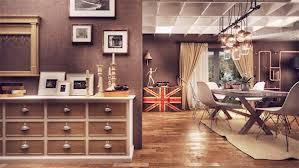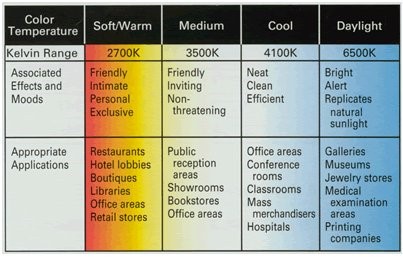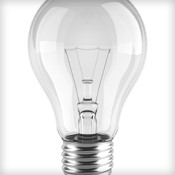Home is where the heart is. Having the right ambiance is paramount and helps create the perfect setting and feel. As a Home Stager I look at so many different things. Whether it is the furnishings, paint colours and functionality of each space, having correct lighting is also very important to help showcase each space. Hopefully the following will help allow a better understanding of lighting.
With the numerous advances in lighting technology, it can be hard to choose the right light source unless you understand the basics of how light is described and measured.
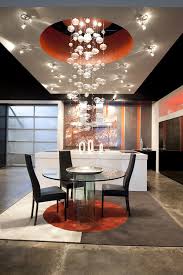 Light is not always what it seems. Our eyes are very forgiving, so when we move from place to place everything seems normal in terms of colour. So, for example, when moving from a bright daylight environment to a room lit by a candle all that will appear to change, to the naked eye, is the light level. Different bulbs, different colour emotions and looks.
Light is not always what it seems. Our eyes are very forgiving, so when we move from place to place everything seems normal in terms of colour. So, for example, when moving from a bright daylight environment to a room lit by a candle all that will appear to change, to the naked eye, is the light level. Different bulbs, different colour emotions and looks.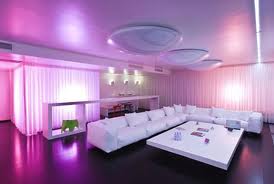
It is important to remember that indoor spaces lit to lower light levels will typically look and feel better under warm lamps, while higher light levels are easier to tolerate using cool lighting. A space which receives an abundance of sunlight may seem more natural when cooler lamps are installed since their light is closer to high colour temperature of natural daylight.
Lighting Effects
Ambient lighting is a general illumination so the occupants can see everything and move around freely. It is usually created through a combination of natural light filtering in through windows, as well as overhead light fittings.
Di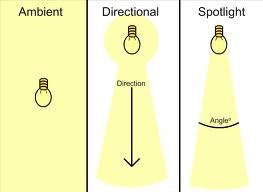 rectional lighting simply means lighting that travels in a specific direction. This lighting highlights a specific object or work surface. It is also usually provided by a stronger light source.
rectional lighting simply means lighting that travels in a specific direction. This lighting highlights a specific object or work surface. It is also usually provided by a stronger light source.
Spotlight is a strong beam of light that illuminates only a small area.
We also have Natural light. Light supplied by the sun, as opposed to artificial light from light bulbs.
There are many lighting techniques you can use to create a mood for every room.
Task lighting is used to illuminate an area that is used for a visual task, such as reading or sewing. Task lighting is essential to every room, as you do a variety of tasks in different rooms. There is a selection of light fittings that can be used for task lighting, and combined with ambient lighting they create a well-lit room.
Accent lighting is used to add drama or style to a room by highlighting a specific area or object in it. It is also referred to as decorative lighting and is used at parties or can be used to help light a room if your task lighting is not bright enough.
Mood lighting is exactly what it says it is, lighting that is used to create a certain mood or atmosphere within a room. A combination of small light sources, it is typically used in bedrooms and sometimes dining rooms, depending on the occasion. Mood lighting is created with coloured light bulbs, dimmed lights and candles.
Lighting measurements deal with:
- The quantity of light – How much light comes out of the light and how much hits the surface you want to illuminate, such as a desk or countertop.
- The quality of light – What is the color of the light itself and how does it affect what colors I actually see. Are the blues really blue or are they washed out? Can I distinguish one item from another on a dark night with this light?
- The fixture efficiency – How much light actually leaves the fixture and is directed towards the area or surface that needs to be illuminated? How does that affect my cost?
The usual measure of color temperature is the Kelvin scale, abbreviated as “K,” where 2700 or 3000 Kelvins is described as warm, 3500 Kelvins is neutral and higher Kelvin values are cool.
Color temperature is what you see when you look at a neutral surface illuminated by a light bulb.
Types of Artificial Light Sources
Incandescent:
An incandescent bulb consists of a filament that glows when electricity is passed through it.
A halogen lamp is a type of incandescent lamp where high-pressure halogen gas is inside the bulb allowing the filament to burn hotter and longer.
Fluorescent lamp fixtures are more costly than incandescent lamps because they require a ballast to regulate the current through the lamp, but the lower energy cost typically offsets the higher initial cost.
Compact Fluorescent Light
CFL stands for “compact fluorescent lamp.” As the name implies, CFLs are compact versions of the long, tubular fluorescent lamps that are commonly seen in offices, schools and institutional buildings worldwide. CFLs are becoming more familiar as they replace the standard, screw-in incandescent bulb.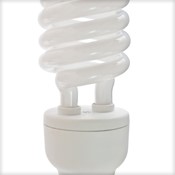
CFL bulbs can save up to 75 percent of the energy used by an incandescent bulb. Though they cost more up-front, they last much longer, and they’ll quickly pay for themselves through energy savings. They’re also cooler, fit in most lighting fixtures, and are available in warmer colour tones (earlier models cast a cold, bluish light that some users found ugly). Some models are dimmable, but others can’t be used with a dimmer switch.
LED’s are the newest type of artificial light and were born out of the electronics and computer industry. An LED (light-emitting dio des) is a tiny electronic device that emits light. LEDs turn on instantly, so there is no warm-up time. In fact, they are ideal for uses where there is a need for frequent “on/off”.
des) is a tiny electronic device that emits light. LEDs turn on instantly, so there is no warm-up time. In fact, they are ideal for uses where there is a need for frequent “on/off”.
This is an advantage over fluorescent lamps, which fail faster when turned on and off often. 
LED light bulbs do not contain breakable filaments or glass, making them shock-resistant, unlike fluorescent and incandescent  bulbs, which are fragile. There are so many different designs to choose from. This type of light for me is my favourite.
bulbs, which are fragile. There are so many different designs to choose from. This type of light for me is my favourite.
Helpful Tips
- Replace incandescent bulbs with compact fluorescent lights (CFLs). The newest CFLs do not flicker like those of old, and they have much better color quality than even just a few years ago. Choose bulbs labeled “residential color,” “warm” or “soft white.”
- Replace dimmable incandescent bulbs with dimmable CFLs. While CFLs still do not have the dimming range of incandescents, the technology has come a long way.
- Buy name brands. They will last longer and look better.
- Make sure your outdoor lighting is energy efficient. Look for outdoor fixtures that use either CFLs or LEDs and that are motion sensor or photocell activated.
- Buy Energy rated fixtures and bulbs. This means they are certified.
- Retrofit recessed lighting with LED fixtures. It’s easy to replace recessed fixtures with super energy-efficient LED versions, and while costly, LEDs will last many years.
